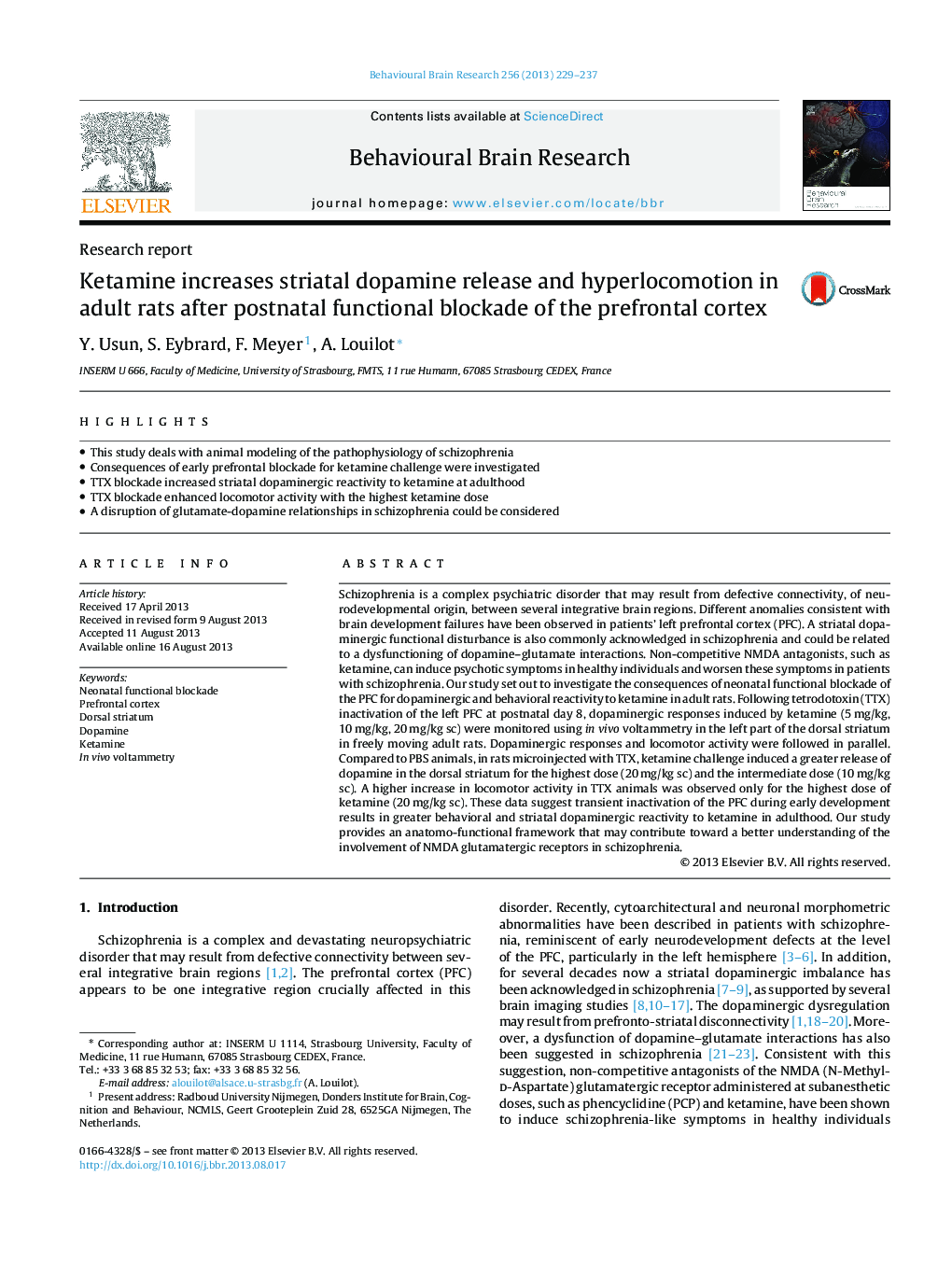| Article ID | Journal | Published Year | Pages | File Type |
|---|---|---|---|---|
| 6258785 | Behavioural Brain Research | 2013 | 9 Pages |
â¢This study deals with animal modeling of the pathophysiology of schizophreniaâ¢Consequences of early prefrontal blockade for ketamine challenge were investigatedâ¢TTX blockade increased striatal dopaminergic reactivity to ketamine at adulthoodâ¢TTX blockade enhanced locomotor activity with the highest ketamine doseâ¢A disruption of glutamate-dopamine relationships in schizophrenia could be considered
Schizophrenia is a complex psychiatric disorder that may result from defective connectivity, of neurodevelopmental origin, between several integrative brain regions. Different anomalies consistent with brain development failures have been observed in patients' left prefrontal cortex (PFC). A striatal dopaminergic functional disturbance is also commonly acknowledged in schizophrenia and could be related to a dysfunctioning of dopamine-glutamate interactions. Non-competitive NMDA antagonists, such as ketamine, can induce psychotic symptoms in healthy individuals and worsen these symptoms in patients with schizophrenia. Our study set out to investigate the consequences of neonatal functional blockade of the PFC for dopaminergic and behavioral reactivity to ketamine in adult rats. Following tetrodotoxin (TTX) inactivation of the left PFC at postnatal day 8, dopaminergic responses induced by ketamine (5Â mg/kg, 10Â mg/kg, 20Â mg/kg sc) were monitored using in vivo voltammetry in the left part of the dorsal striatum in freely moving adult rats. Dopaminergic responses and locomotor activity were followed in parallel. Compared to PBS animals, in rats microinjected with TTX, ketamine challenge induced a greater release of dopamine in the dorsal striatum for the highest dose (20Â mg/kg sc) and the intermediate dose (10Â mg/kg sc). A higher increase in locomotor activity in TTX animals was observed only for the highest dose of ketamine (20Â mg/kg sc). These data suggest transient inactivation of the PFC during early development results in greater behavioral and striatal dopaminergic reactivity to ketamine in adulthood. Our study provides an anatomo-functional framework that may contribute toward a better understanding of the involvement of NMDA glutamatergic receptors in schizophrenia.
